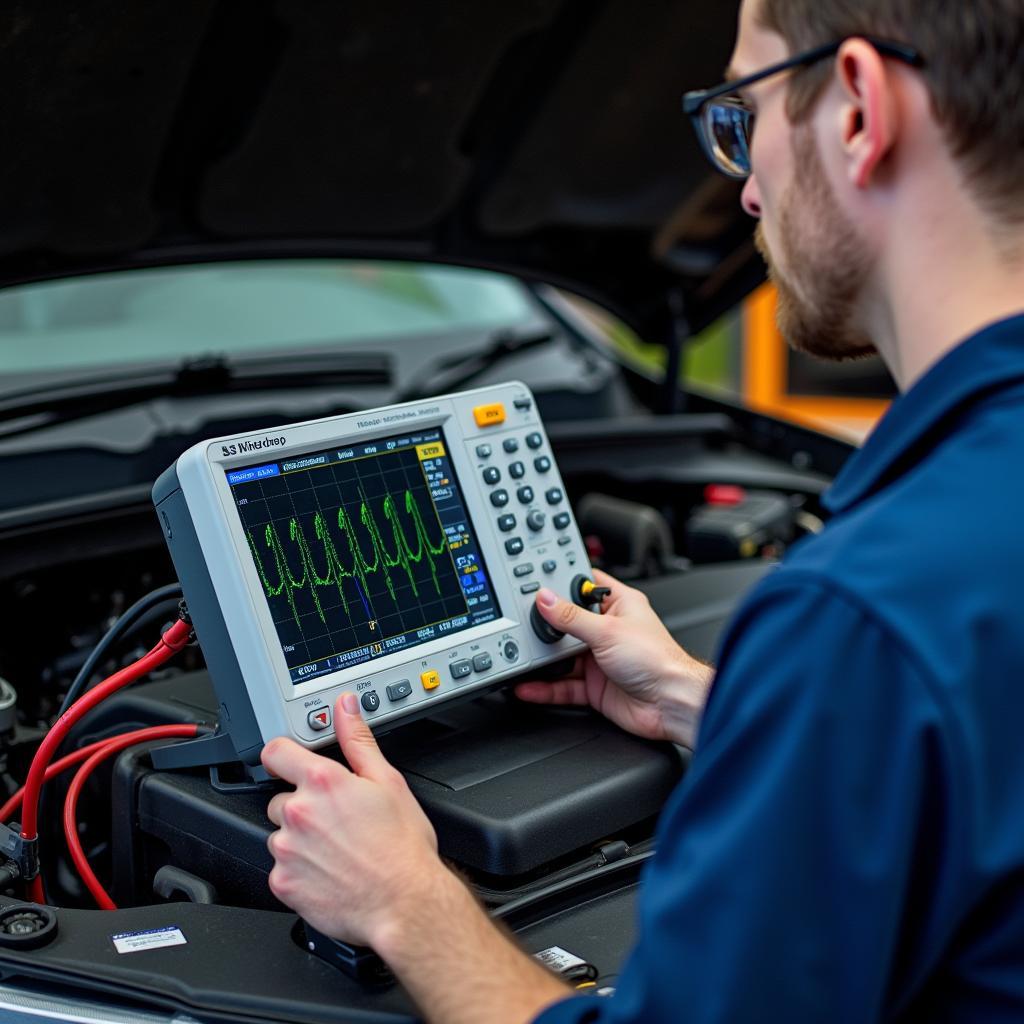Diagnosing car electrical problems can feel like navigating a maze, but with a systematic approach, you can pinpoint the issue. This article provides a comprehensive guide on How Do You Diagnose Car Electrical Problems, empowering car owners, mechanics, and technicians to troubleshoot electrical malfunctions effectively. Learn how to identify symptoms, utilize diagnostic tools, and understand the underlying causes of common electrical issues.
brand new car has problems money
Understanding the Basics of Car Electrical Systems
Before diving into diagnostics, it’s crucial to grasp the fundamental components of a car’s electrical system. This intricate network comprises the battery, alternator, starter, wiring, fuses, relays, and various electronic control units (ECUs). Each component plays a vital role, and a malfunction in one can trigger a cascade of problems. For instance, a failing alternator can lead to a drained battery, while a blown fuse can disable specific functions.
 Car Electrical System Diagram
Car Electrical System Diagram
Common Symptoms of Car Electrical Problems
Recognizing the telltale signs of electrical problems is the first step towards accurate diagnosis. These symptoms can range from minor inconveniences to major malfunctions. Dim or flickering headlights, a slow cranking engine, and malfunctioning accessories are just a few examples. More severe issues might include a complete electrical system failure, leaving you stranded.
Identifying the Culprit: Pinpointing the Source of the Problem
Once you’ve observed the symptoms, it’s time to narrow down the possibilities. Start by checking the battery’s voltage with a multimeter. A low voltage reading indicates a weak or failing battery. Next, inspect the fuses and relays for any signs of damage. A blown fuse will have a broken filament, while a faulty relay might produce a clicking sound.
Utilizing Diagnostic Tools and Techniques
While visual inspection and basic tests can reveal some issues, more complex problems require specialized diagnostic tools. An OBD-II scanner can retrieve diagnostic trouble codes (DTCs) from the vehicle’s computer, providing valuable insights into the nature of the malfunction. Using a wiring diagram, you can trace the circuit related to the DTC and identify the faulty component.
Decoding Diagnostic Trouble Codes: Understanding What Your Car is Telling You
DTCs are alphanumeric codes that represent specific malfunctions within the vehicle’s systems. Understanding these codes is essential for accurate diagnosis. You can find the meaning of DTCs online or in a repair manual. For instance, a code related to the oxygen sensor might indicate a problem with the engine’s fuel-air mixture.
thrifty car rental website technical problem
Advanced Diagnostic Procedures
In some cases, more advanced diagnostic procedures are necessary. These might include using an oscilloscope to analyze electrical signals or performing continuity tests to check for broken wires. These techniques require specialized knowledge and equipment, and are typically performed by experienced technicians.
“Accurate diagnosis is paramount,” says John Davis, a seasoned automotive electrician. “A misdiagnosis can lead to unnecessary repairs and wasted time.”
 Mechanic Using Oscilloscope
Mechanic Using Oscilloscope
Preventing Electrical Problems: Proactive Maintenance Tips
Preventing electrical problems is often easier and less costly than fixing them. Regular maintenance, such as checking the battery terminals for corrosion and inspecting the wiring for damage, can help prevent many common issues. Replacing worn-out components proactively can also prevent unexpected breakdowns.
“Preventive maintenance is key to a healthy electrical system,” adds Sarah Miller, a certified automotive technician. “Regular checks can save you from headaches down the road.”
Conclusion
Knowing how do you diagnose car electrical problems is crucial for any car owner or mechanic. By understanding the basics of car electrical systems, recognizing common symptoms, and utilizing appropriate diagnostic tools and techniques, you can effectively troubleshoot and resolve electrical issues. Remember, a systematic approach, combined with proactive maintenance, can keep your car’s electrical system running smoothly.
problem with hertz certified car
does car insurance cover mechanical problems
For further assistance or personalized guidance with your car’s electrical problems, connect with AutoTipPro at +1 (641) 206-8880 or visit our office at 500 N St Mary’s St, San Antonio, TX 78205, United States. We are here to help you get back on the road!




Leave a Reply